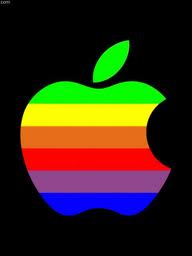 Since the release of Apple Pay, there have been several news stories about the rocky rollout of the service. Several companies that initially said they would accept payments through the service backtracked and now say they will no longer accept Apple Pay payments. Apple Pay is also facing competition from the Merchant Customer Exchange, a consortium with its own mobile wallet, CurrentC, which can be used on nearly any old or new smartphone.
Since the release of Apple Pay, there have been several news stories about the rocky rollout of the service. Several companies that initially said they would accept payments through the service backtracked and now say they will no longer accept Apple Pay payments. Apple Pay is also facing competition from the Merchant Customer Exchange, a consortium with its own mobile wallet, CurrentC, which can be used on nearly any old or new smartphone.
Some specific things are necessary before a business can begin accepting payments through Apple Pay. Most importantly, the company must be set up with a near field communications (N.F.C.) reader, also called a contactless reader. Currently, less than 10 percent of American retailers have N.F.C. reader installed at their locations.
Several larger retailers have already taken the necessary steps to be able to accept Apple Pay, including Whole Foods, McDonald’s, Subway, and Macy’s. One of the biggest benefits of the service for business is that there are no added fees from Apple on top of the credit card fees merchants already pay. However, for some businesses, the cost of purchasing the N.F.C. payment terminals could be prohibitive to adopting the payment method. Smaller businesses could purchase the machines for between $300 and $500.
Companies that are most up to date with the trend purchase N.F.C. readers that are E.M.V.-compliant. E.M.V. stands for Europay, MasterCard and Visa. These N.F.C. readers can accept both digital payments like Apple Pay and E.M.V. credit cards. Cards that use the technology are also known as chip-and-pin cards and are considered more secure than the magnetic-strip credit cards widely in use in the United States.
Many businesses in the United States are considering the switch to E.M.V. technology after the massive data breaches that affected the retail industry and exposed the information of millions of cardholders. Business that are interested in upgrading their systems simply replace their old payment terminals with the new ones. In an effort to nudge businesses towards this new technology, an announcement by card issuers was made stating that after October 2015, merchants that continue to use magnetic-strip terminals will no longer be protected from credit card fraud.
